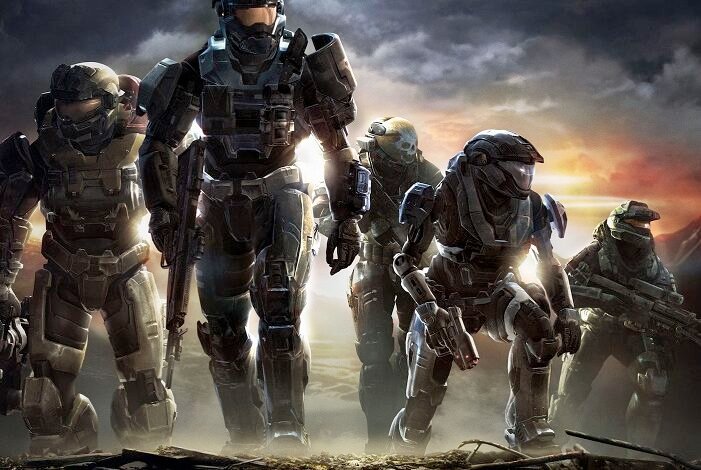Halo (2003) game icons banners: What you need to know in 2024?

Greetings, fellow gamers and Halo enthusiasts! Today, we embark on an in-depth exploration of one of gaming’s most iconic titles: “Halo: Combat Evolved,” specifically focusing on its revolutionary game icons and banners. Released in 2001 and further refined in the 2003 edition, Halo (2003) not only redefined the first-person shooter genre but also set new standards in visual design that continue to resonate with gamers worldwide. Join me as we unravel the intricate design philosophy, cultural impact, and enduring legacy of Halo (2003)’s unforgettable icons and banners.
Introduction: Halo (2003) – A Milestone in Gaming Visuals
Halo: Combat Evolved burst onto the scene with its immersive storyline, innovative gameplay mechanics, and groundbreaking graphics. By the time of its 2003 edition, the game had already captivated millions of players with its epic narrative and stunning visuals. Central to its visual allure were the meticulously crafted game icons and banners, which not only facilitated gameplay but also enriched the player experience through artistry and narrative depth.
Unveiling Game Icons: Design Principles and Functionality
Game icons in Halo (2003) serve as essential navigational tools within the game’s user interface, representing weapons, vehicles, equipment, and other interactable elements. The design philosophy behind these icons emphasizes clarity, functionality, and aesthetic appeal, ensuring players can quickly identify and utilize items during intense combat scenarios.
Clarity and Recognition: Each icon in Halo (2003) is designed with a minimalist approach, featuring bold shapes and distinct color schemes that enhance visibility and recognition. Whether it’s the angular silhouette of the Warthog vehicle or the sleek design of the Magnum pistol, these icons are crafted to be instantly identifiable amidst the fast-paced action of gameplay.
Consistency Across Design Iterations: Throughout the Halo series, from Combat Evolved to subsequent titles, the consistency in icon design maintains a cohesive visual language that resonates with veteran players and newcomers alike. This evolutionary approach not only facilitates player familiarity but also reinforces the iconic status of Halo (2003)’s visual identity within the gaming community.
The Artistry of Banners: Crafting Visual Narratives
Beyond functional icons, banners in Halo (2003) serve as larger-scale visual elements used in loading screens, promotional materials, and multiplayer interfaces. These banners play a pivotal role in conveying themes, mood, and narrative context, immersing players in the expansive universe of Halo and enhancing the overall storytelling experience.
Narrative Depth and Visual Impact: Banners featuring iconic characters like Master Chief or monumental battles against the Covenant are designed to evoke emotion and intrigue. Through dynamic artwork, bold compositions, and thematic color palettes, these banners encapsulate key moments in the game’s storyline, enticing players to delve deeper into its rich lore.
Artistic Expression and Immersive Design: The design of banners in Halo (2003) exemplifies a fusion of artistic expression and functional design. Each banner is meticulously crafted to not only capture the essence of Halo’s sci-fi universe but also engage players on a visual and emotional level. Whether it’s depicting the serenity of Halo’s ringworlds or the intensity of intergalactic warfare, these banners transcend mere decoration, becoming integral components of the player’s journey through the game.
Design Philosophy: Balancing Artistry and Functionality
The design philosophy behind Halo (2003)’s icons and banners underscores Bungie Studios’ commitment to crafting an immersive and visually stunning gaming experience. Here’s a closer look at the core principles that guided their creation:
Functionality in Action: Icons and banners are meticulously designed to balance functional clarity with artistic expression. This dual focus ensures that players can navigate the game interface effortlessly while appreciating the aesthetic beauty of Halo (2003)’s visual elements.
Cohesive Visual Narrative: Every icon and banner contributes to a cohesive visual narrative that enhances the player’s immersion in Halo’s expansive universe. From the recognizable silhouette of the Needler to the captivating artwork of promotional banners, each visual element plays a role in shaping the game’s identity and narrative progression.
Cultural Impact and Enduring Legacy
The cultural impact of Halo (2003)’s icons and banners extends beyond gameplay mechanics to become enduring symbols of gaming excellence and innovation. These visual elements have left an indelible mark on gaming culture, inspiring fan art, cosplay, and community celebrations that continue to thrive today.
Influence on Gaming Aesthetics: Halo (2003)’s design aesthetics have influenced numerous games across genres, setting benchmarks for visual fidelity and artistic direction in the gaming industry. From UI design principles to character iconography, the influence of Halo (2003)’s icons and banners can be seen in the evolution of gaming visuals over the past two decades.
Community Engagement and Nostalgia: The iconic status of Halo (2003)’s visual elements fosters a sense of community engagement and nostalgia among fans. Discussions, retrospectives, and tributes to these icons and banners serve as testaments to their enduring popularity and cultural significance within the gaming community.
Conclusion
In conclusion, the icons and banners of Halo (2003) transcend their roles as mere visual elements; they are pivotal components of a visual narrative that continues to captivate and inspire gamers worldwide. Their design excellence, narrative depth, and cultural impact underscore their place in gaming history as symbols of innovation and artistic achievement. As we celebrate Halo (2003)’s visual legacy, let us appreciate the artistry and craftsmanship that define these iconic elements. Whether you’re revisiting the game or discovering it for the first time, take a moment to immerse yourself in the visual tapestry of Halo (2003) and its enduring impact on the world of gaming.



